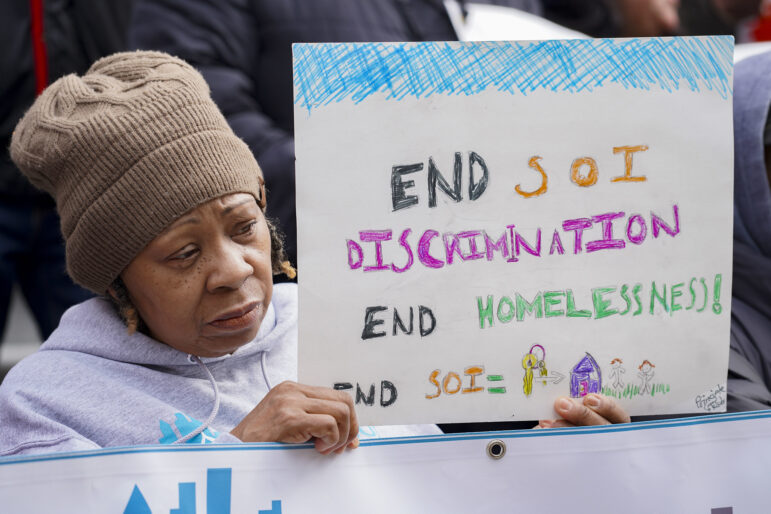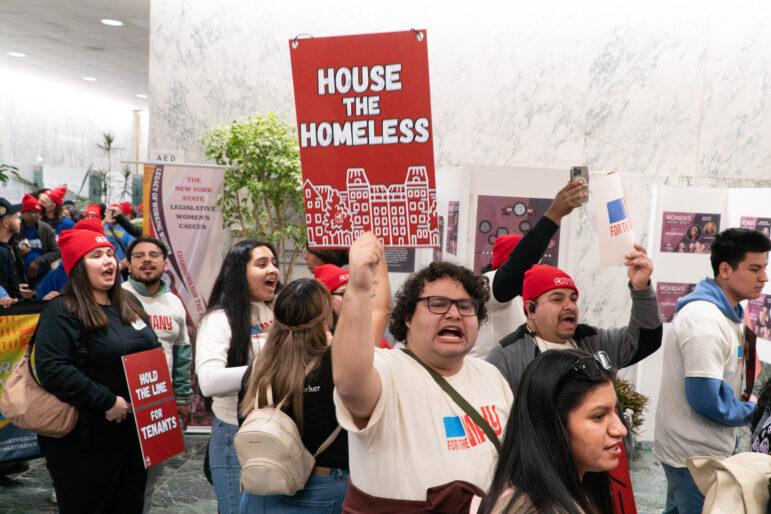Contested Streets, Directed by Stefan Schaefer. To arrange for viewing or purchase, visit Transportation Alternatives.
I confess that as I sat in the back room of Teddy’s restaurant in Williamsburg on a recent night watching “Contested Streets,” a documentary by Cicala Filmworks, I lusted in my heart. I did not lust for my waitress, though she was competent and cute. Nor did I lust for the nearly naked Parisians shown lounging by the Seine in summer on an embankment that for eight months of the year, when it is not closed for recreation, is dangerous and polluted because it is overrun by cars.
No. What I lusted for, as I chastely sipped a beer and watched the video play for 57 minutes across two large sheets of paper taped to a wall, was this: an urban planner in New York with the apparent clout of Jan Gehl of Copenhagen, who has re-engineered what seems to be a majority of that city’s streets to grant access to pedestrians, bicyclists, bus riders and drivers, in roughly that order of priority.
In the video, he describes the steady improvement of Copenhagen’s public spaces and how it has given him the feeling every morning for the past 40 years that he has woken up in a city that is “a little better than the day before.” Contrast that to, say, the sensation caused by your clock radio as it squawks out yet another warning of a standstill on the Kosciusko Bridge.
Next, we learn about Paris’s 30 bus rapid transit routes – car- and truck-free lanes that allow buses to move at subway-like speeds, a commonsense feat that turns buses into objects of desire rather than, as they are in Manhattan, targets of mockery. (New York is scheduled to experiment with two such routes next year.)
And we are told about London’s congestion pricing system, which charges drivers $16 to enter the city’s central district during rush and business hours. (For a more detailed explanation of this policy, go here.) In the last four years, London’s auto use has decreased by four percent while its transit ridership has increased by the same amount. In the world of transportation, those are dramatic numbers.
“Contested Streets” convincingly submits that such practices have wrested urban roadways in Europe from the alternately speeding and gridlocked auto and transformed them into utopias of locomotive slo-mo: flocks of people strolling down the middle of shop-lined streets; streams of bicyclists riding next to, but not in, traffic; and places like London’s Trafalgar Square, which functions most of the year as a vehicular roundabout, transformed in summer into a public plaza with so many drummers and jugglers that it must cause shortages at fringe festivals for several hundred miles.
Jealous? Lust will do that to you. And that is the point of this largely effective video: to make you want the streetscapes of these European cities so badly that you rise up from your restaurant chair and, after paying the bill and tipping the waitress, demand action in New York of a kind to produce a statistic like this one from Copenhagen: 30 years ago, city traffic killed 130 people a year, a number that in 2005 was reduced to four. In New York City in 2005, the number of traffic fatalities was 312.
What kind of action? Paul Steely White, executive director of Transportation Alternatives, the video’s consulting producer, is glad you asked. He said that at the end of screenings, people are encouraged to contact their city councilmember in support of Intro. 199, a bill that would require the city’s Department of Transportation to modify its traffic goals from the current emphasis on vehicles moved, which is typically accomplished by more and wider roads, to increasing “spatially efficient” modes of travel like walking, bicycling and transit. Neither Mayor Bloomberg nor DOT Commissioner Iris Weinshall have explicitly endorsed the bill. The Council has scheduled a hearing about it on Jan. 25.
White said the group is wrangling to have “Contested Streets” aired on either PBS or a cable TV station. That makes me wish it had avoided mistakes like spending the first fifteen minutes on a tired rehash of the history of the highway in New York, in which raccoon-eyed roadbuilder Robert Moses comes in for a too-predictable beating and plummy announcers from the 1960s World’s Fair era are made to look foolish with their ludicrously upbeat predictions of a car-centric future. Such targets are the inverse of the milk cans at a street fair ball-toss booth: you can’t help but knock them down.
I also wish the video had reduced its reliance on talking heads Kenneth T. Jackson of Columbia University and Mike Wallace of CUNY, eloquent as they are, and introduced us to the activists and policymakers who are devising New York’s creative traffic strategies. There must be a government planner who can stand in front of a camera and, like Jan Gehl, explain how the world wouldn’t end if certain streets lost their curbside parking to widen the sidewalk.
Why not show a local victory, anything from a traffic-calming intersection to the West Side greenway, and tell us how it happened? The fifteen viewers at Teddy’s spent most of the post-show discussion lamenting New York’s hostility to non-combustion propulsion. If they had just viewed a couple of stories about New Yorkers scrapping for better streets and, here and there, winning them, might they have talked instead about joining the cause?
The stakes are huge. New York wastes an estimated $2 billion of productivity a year on traffic congestion, a fact I gleaned from “Contested Streets,” a video that despite its minor shortcomings I would recommend to anyone looking to live in a less mechanistic, more humanistic city.
The economic impact of traffic congestion is explored further, and estimated at a loss of $13 billion per year, in a report released this month by the Partnership for New York City, Growth or Gridlock.









